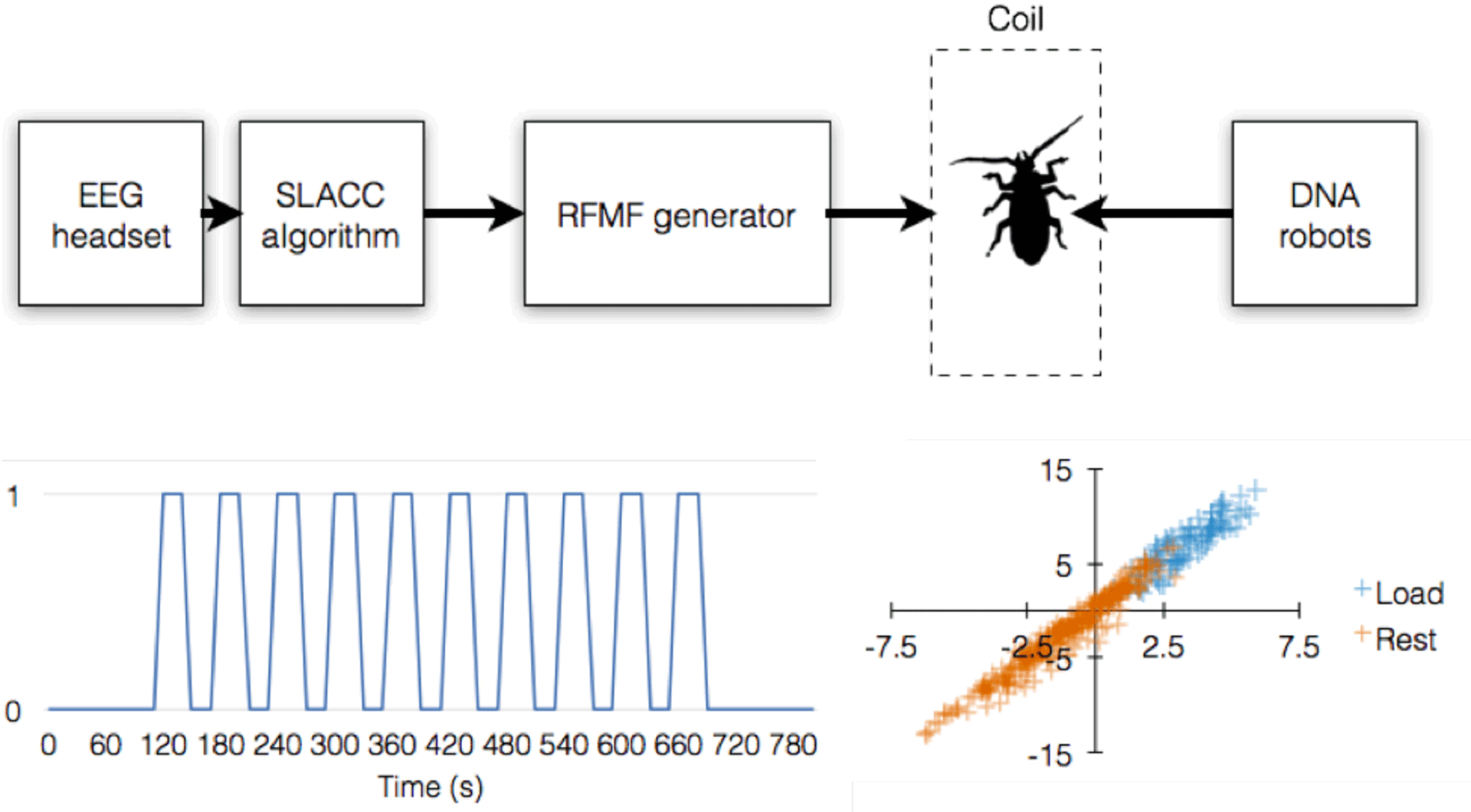Smart nanobots inject substances in response to the state of the brain

When over-excited, a person is automatically injected with a sedative.
Imagine that millions of nanobots with different drugs (and not only drugs, but also other substances: for example, stimulants) run through your bloodstream. Optionally, you mentally remove the "lock", activate the bots - and get the required dose. Moreover, nanobots are able to operate automatically in response to the state of the brain. For example, with increasing aggression or anxiety, with excessive agitation, a person is automatically injected with a sedative. When tired - caffeine and other energy. When sadness - an antidepressant. What can I say, such nanobots can even maintain a constant safe level of alcohol in the blood , not exceeding it!
Such fantasy will be possible if the unique technology of mental control and remote activation of nanobots with drugs developed by the Intersectoral Center in Herzliya and the University of Bar Ilana in Ramat Gan (both are scientific institutions in Israel).
Currently, the technology is still in its infancy. Scientists have managed to design only containers for drugs with a "lock", which opens under the influence of electromagnetic radiation. It is assumed that a person should carry a source of such an EMP with him, and this transmitter should be connected to a wearable brain scanner, which captures the electroencephalogram in real time. When registering a certain brain activity, the scanner sends a signal - and the EMP transmitter is triggered. In the electromagnetic field "lock" nanobots open - and the right medicine enters the body.
')

The algorithm for triggering nanobots, which releases the drug into the body of a cockroach on the mental command of a person (experiments were conducted on cockroaches). The bottom left shows the structure of the experimental protocol, in which the values of 1 and 0 correspond to the presence or absence of cognitive activity in humans, and the lower right shows the classification of the actual presence / absence of brain activity according to the SLACC working protocol classification
During the experimental tests, the head-mounted scanner was programmed to recognize not any specific brain activity, but any activity . That is, in the absence of brain activity, the EMI transmitter did not receive any commands, and when brain activity appeared, nanobots entered into the body and a medicine was injected into the cockroach (the experiments were performed on cockroaches). The tests were successful.

Nanorobots have allocated the drug in the body of this cockroach effort of human thought. Photo: National Geographic Photo Ark / Getty
The main innovation in this scientific work is the design of a nanobot, developed from DNA molecules by the origami method using the computer program caDNAno 2.0 (files for the manufacture of DNA nanorobots are attached to scientific work). The robots are made of ssDNA molecules taken from the bacteriophage virus M13mp18 as a skeleton, the other parts are custom-made by Integrated DNA Technologies . Origami robot folding was made in tris-acetate buffer (standard buffer solution) with a standard temperature cycle for folding.
Nanorobots are miniature medicinal containers with a “lock” in which DNA chains are chemically bonded to a nanoparticle of iron oxide, which reacts to electromagnetic radiation (in the illustration above left). Fluorescent material was used as a medicine, and the diagram on the bottom left shows the change in the level of fluorescence upon activation of the EMI transmitter.

Measurement using flow cytometry showed that robots are not destroyed after opening the lock. The diagram on the lower right shows the number of closed robots in the stream (black), open robots (green) and remotely activated robots (magenta).
Now inventors need to calibrate the scanner for various types of brain activity, as well as create different types of “locks” for nanobots so that different types of drugs can be carried in the body at the same time. In addition, it will be useful to establish the contact of the transmitter with other sensors, not only with the brain. For example, with a sensor that determines the concentration of alcohol or sugar in the blood. In this case, the nanobots will inject the substance, regardless of the person's desire, according to the indications of the sensors.
In addition, more compact portable brain scanners should be developed that a person can wear all the time every day. The authors of the invention suggest that such devices will look quite stylish, like a sports bandage on the forehead. A fitness bracelet, for example, will play the role of an EMR emitter.
Scientists believe that such technology in the future may find applications for the treatment of mental illness, including schizophrenia. The algorithm can be configured to identify different types of brain activity: “The algorithm can track the state of the brain that underlies ADHD or schizophrenia, for example. It can be modified to suit your needs, ” says Sachar Arnon, a member of the research team at the Intersectoral Center in Herzliya.
In other words, the medicine will be released into the human body even before the person has realized the need to take the medicine. This is especially useful in cases where a person is not able to realize this need.
Remote-controlled smart drugs are a very attractive and promising technology. The main thing is that it does not fall into the hands of intruders. Suddenly, in non-free countries with dictatorial regimes, the authorities will be tempted to control the thoughts of citizens, automatically injecting them with medication when a certain brain activity appears?
The scientific work of Israeli scientists was published on August 15, 2016 in the journal PLoS ONE ( doi: 10.1371 / journal.pone.0161227 ).
Source: https://habr.com/ru/post/396987/
All Articles